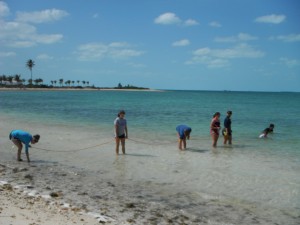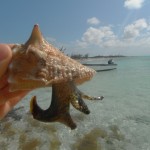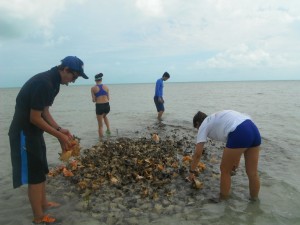This past semester, researchers, students, and volunteers have been busy surveying South Eleuthera’s shoreline, looking for queen conch juveniles. Under the direction of CEI researcher Claire Thomas, survey methods were implemented to identify essential queen conch nursery habitat.

Queen conch populations are declining in Eleuthera. Past research has shown that protection of adult conch alone is not adequate to protect the whole population, as juveniles and adults utilize different habitat types. Adults are generally found in deeper water in sandy areas, whereas juveniles will be in shallow water, most often in seagrass beds, where they graze on detritus and algae. To ensure that protection is sufficient, juvenile populations also have to be protected.

The government of the Bahamas, along with the Bahamas National Trust, are interested in creating a Marine Protected Area, or No-Take Zone, off the waters of South Eleuthera. The CEI Queen Conch Research Program aims to identify hot spots of juvenile queen conch, through their shoreline surveys, to inform officials of an important place to protect. In the summer, during queen conch mating season, SCUBA transects will be done to identify aggregations of adult queen conch. This information is also important, as breeding grounds are another essential habitat in the queen conch life cycle.

Many thanks to the Island School students, visiting programs, and other volunteers who have helped us to cover over 150,000 square meters of shallow waters in South Eleuthera since the surveys began in March.